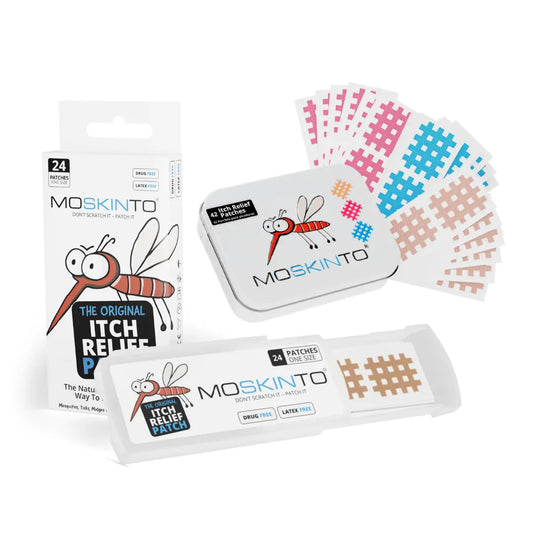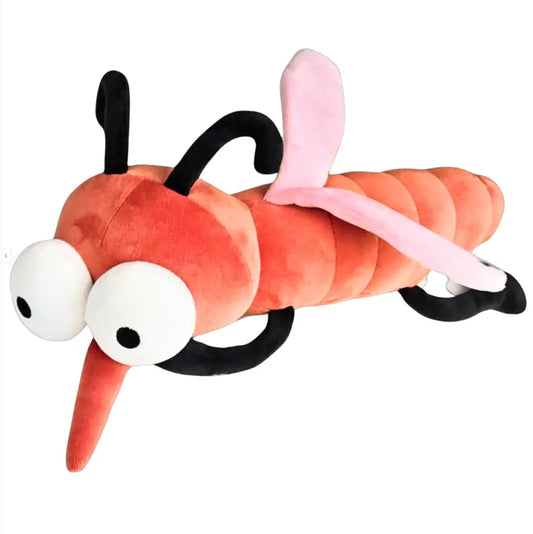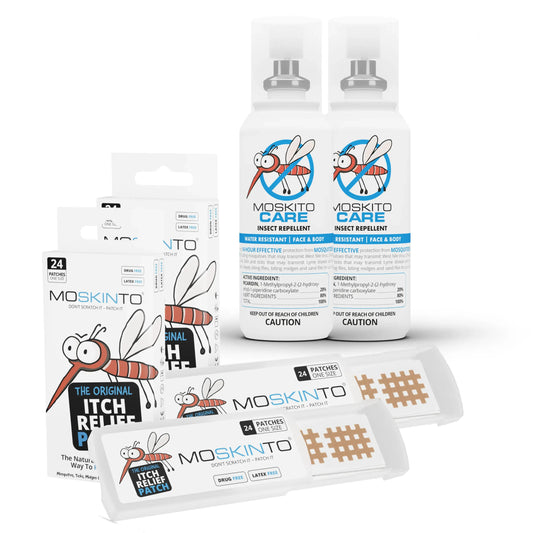Bite by Bite: Unraveling How Mosquitoes Become Zika Virus Vectors
Hey there! Ever wondered how a tiny mosquito bite could lead to something as concerning as the Zika virus? You see, Zika isn't your average viral invader; it's part of the mighty Flaviviridae family, which also features heavy hitters like Dengue and West Nile virus. This single-stranded RNA nemesis first stirred the pot in the mid-20th century within the equatorial belt of Africa and Asia. But it wasn't until its grand entrance into the Americas around the 2010s that Zika really made headlines. Fast forward to today, and Zika's global shuffle has put it on our radar, evolving from a sleeper agent to a full-blown international concern. Stick around as we dissect the fascinating - albeit a tad creepy - world of Zika transmission by those pesky, buzzing vectors we love to hate: mosquitoes.
How Do Mosquitos Turn into Tiny Vampires of Disease?
Mosquito biology and behavior play a crucial role in their ability to transmit diseases like Zika virus. These winged creatures are not just annoying pests; they are highly efficient at what they do. Mosquitos feed on blood to help in egg production, and it's during this process that they can pick up and transmit viruses from host to host.
Understanding mosquitos as vectors of disease requires a peek into their feeding process. When a mosquito plunges its proboscis into the skin of a human or animal, it injects its saliva, which contains anticoagulants to prevent blood from clotting. If that mosquito has previously fed on an infected host, the Zika virus could be present in its saliva and thus is introduced into the bloodstream of the next victim.
- Zika virus primarily spreads through the bite of an infected Aedes species mosquito.
- Only female mosquitoes bite because they need blood to produce eggs.
- A mosquito becomes infected by feeding on a person already infected with the virus.
- Once infected, the mosquito is capable of spreading the virus for the rest of its life.
Now that we've scratched the surface of mosquito behavior and their penchant for spreading the Zika virus, we'll dive deeper into the transmission cycle and the way these tiny flyers contribute to the ongoing battle against vector-borne diseases. Stay buzzed for the next part where we focus on the primary culprits: Aedes Mosquitoes!
The Transmission Cycle of Zika Virus
Understanding how mosquitoes transmit the Zika virus is crucial in preventing its spread. The transmission cycle is a complex process that involves the interaction between the virus, the mosquito, and humans.
Lifecycle of the Zika Virus
The lifecycle of the Zika virus begins when a female Aedes mosquito feeds on the blood of an infected person. During this process, the mosquito ingests the virus along with the blood. Inside the mosquito, the virus replicates and spreads to the mosquito's salivary glands. Once the replication cycle is complete, the mosquito is capable of transmitting the virus for the rest of its life.
Mosquitoes as Carriers
Not all mosquitoes can become carriers of the Zika virus. It is primarily the Aedes species, such as Aedes aegypti and Aedes albopictus, which are known to transmit the disease. These mosquitoes become carriers when they bite an infected individual and then proceed to bite another person, allowing the virus to spread.
Transmission to Humans
When an infected Aedes mosquito bites a human, the virus is passed into the bloodstream. The person now becomes a host and can potentially spread the virus to other mosquitoes, continuing the transmission cycle. Most Zika infections are mild, but the virus can cause serious health issues, including birth defects if transmitted from a mother to her unborn child.
- Initial infection: A mosquito bites an infected person.
- Replication: The virus replicates inside the mosquito.
- Transmission: The infected mosquito bites a new human host.
- Spread: The cycle continues as more mosquitoes become carriers.
Focusing on the Culprits: Aedes Mosquitoes
When we talk about the transmission of the Zika virus, it's crucial to shine a spotlight on the primary perpetrators-Aedes mosquitoes. These aren't your average pesky insects; they are sophisticated vectors with unique capabilities and wide-reaching impacts.
Characteristics of Aedes aegypti and Aedes albopictus
The mosquitoes in question primarily include Aedes aegypti and Aedes albopictus. The former, also known as the yellow fever mosquito, is notably aggressive and predominantly day-biting. It thrives in tropical and subtropical regions and likes to linger around human habitats. In contrast, Aedes albopictus, often referred to as the Asian tiger mosquito, is recognized by its distinct black and white striped legs. It has adapted to cooler climates, broadening its geographical menace.
Geographic Distribution and Its Significance in America
Historically, Aedes aegypti mosquitoes were mostly confined to equatorial zones. However, their cousins, the Aedes albopictus, have marched further afield. Today, they are increasingly pervasive in the continental United States and are primary factors in the spread of Zika. The presence of these mosquitoes in America is noteworthy as it denotes a new frontier for diseases that were once thought to be geographically isolated.
Their Unique Role in the Zika Virus Outbreak
What sets these Aedes mosquitoes apart when it comes to the spread of Zika virus is their feeding behavior. They prefer to bite humans over other animals and are known to feed multiple times throughout their life cycle. This increases the chances of acquiring and subsequently transmitting the virus. The explosive outbreak of Zika in recent years can arguably be attributed to the proliferation and habits of these two Aedes species.
- Aedes aegypti: Prefers warmer climates, drawn to human habitat, usually bites during the day.
- Aedes albopictus: Adapts to cooler climates, recognized by black and white striped patterns, has broadened the risk areas for Zika virus transmission.
Symptoms of Zika Virus Infection
If you're curious about how the Zika virus might make you feel, you're not alone. Many who get infected with Zika virus experience symptoms that could easily be confused with other common ailments. It's important to recognize these signs, especially if you've recently traveled to an area known for Zika outbreaks or have been bitten by mosquitoes more often than usual.
Common Symptoms Experienced by Those Infected
Typically, the symptoms of Zika virus infection are relatively mild and can include:
- Fever: An elevated body temperature that often accompanies infections.
- Rash: A spotty redness on the skin that can be quite itchy.
- Joint pain: Especially in the smaller joints of the hands and feet.
- Conjunctivitis (red eyes): An inflammation of the eye that causes redness and irritation.
- Muscle pain: General body aches that can be felt in various muscle groups.
- Headache: Persistent pain in the head, not unlike a tension headache.
These symptoms usually last for several days to a week. People rarely get sick enough to go to the hospital, and very few actually die from Zika. However, once a person has been infected, they're likely to be protected from future infections.
Addressing Asymptomatic Cases and Their Implications
What might be even trickier is that up to 80% of people infected with the Zika virus don't show any symptoms at all. This is known as being asymptomatic. While it may sound like good news, it also means that those individuals could unknowingly transmit the virus to others, especially through sexual contact or from a pregnant person to their fetus, which can lead to serious consequences.
That's why recognizing the broader picture of Zika symptoms, including the lack thereof, is crucial for prevention and control. If you suspect you've been exposed to Zika but don't have symptoms, it's still important to seek medical advice, particularly if you're pregnant or planning to become pregnant.
Shield Yourself Against Mosquitoes!
It's crucial to stay proactive when it comes to preventing mosquito bites; after all, these little critters are more than just nuisances - they could carry the Zika virus. Here are some down-to-earth strategies to keep those pesky insects at bay!
Effective strategies to reduce mosquito bites
Staying bite-free is your first line of defense. Here are some tried-and-true methods:
- Use mosquito repellent - Look for ones with DEET, picaridin, or oil of lemon eucalyptus.
- Wear long sleeves and pants - Bonus points for treating clothes with permethrin for long-lasting protection.
- Time it right - Mosquitoes are most active during dawn and dusk, so if you can, stay indoors during these times.
Personal protective measures
Don't make it easy for mosquitoes to make a meal out of you. Get personal with your protective measures:
- Net gains - Sleep under mosquito nets, especially if you're staying in places without screened windows.
- Cover up those baby carriers - Use mosquito netting over strollers and carriers to protect your little ones.
- Keep'em out - Install or repair screens on windows and doors to fortify your personal space against invaders.
Environmental modifications to reduce mosquito exposure
Your environment can be your fortress... or an open buffet for mosquitoes. Here's how to fortify your surroundings:
- Eliminate standing water - This is where mosquitoes breed. Regularly check and remove water from plant trays, bird baths, and unblocked gutters.
- Keep it breezy - Use fans. Mosquitoes are weak flyers, so even a light breeze can deter them.
- Use mosquito traps - While not foolproof, traps can reduce the number of mosquitoes around your home.
Remember, a little effort goes a long way in keeping those itchy bites and the risks of Zika virus at bay. Stay safe and bite-free!












